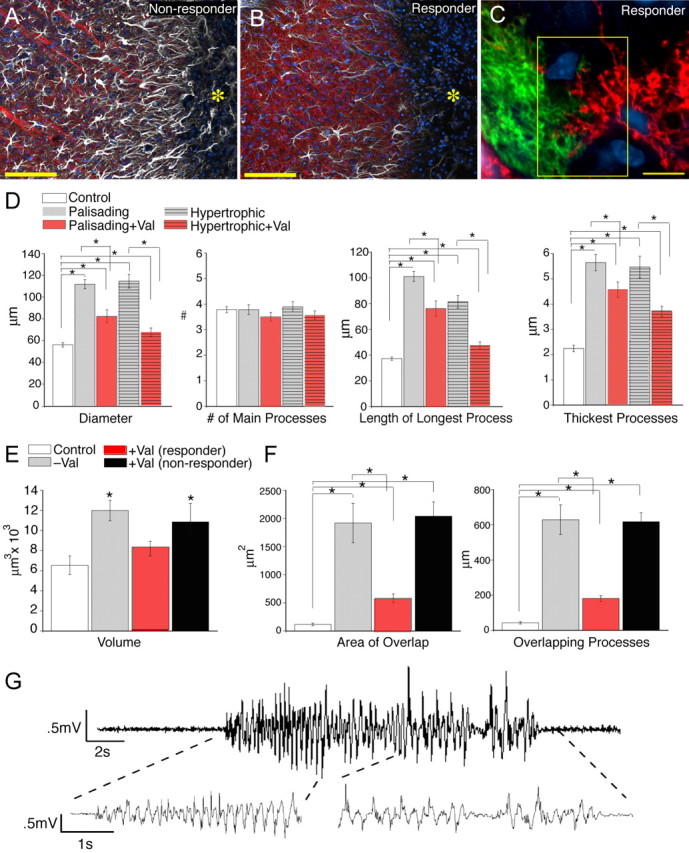Figure 5.

Valproate reduces postinjury seizure activity and overlap of astrocytic processes. A, B, Comparison of the injury border in a mouse that did not respond to valproate (no reduction in seizure activity; A) and a responder (significant reduction in seizure activity; B) 1 week after iron injection. The yellow asterisk indicates the lesion site. White, GFAP; red, Map2; blue, DAPI. Scale bars (SBs), 100 μm. Astrocytes exhibited less reactive changes in mice that responded to valproate. C, Diolistic labeling of two hypertrophic astrocytes near the lesion of an animal that responded to valproate treatment. The astrocytes exhibited less overlap of their processes than in mice that did not receive or did not respond to valproate. The yellow box indicates the border between two adjacent cells. SB, 10 μm. D, Morphometric analysis based on GFAP for animals 1 week after injury with and without valproate treatment (responders). There is a significant decrease in the length of longest process, diameter, and diameter of thickest process in animals successfully treated with valproate compared with those without (n = 65 cells, 5 mice; mean ± SEM; *p < 0.01). E, The volume of reactive astrocytes was significantly reduced in animals that received and responded to valproate 1 week after injury (mean ± SEM responders, n = 18, 4 mice; *p < 0.005; nonresponders, n = 11, 4 mice; p = 0.56). F, Quantification of the domain organization in animals treated with valproate, both responders and those in which the drug had minimal effect. There was a significant decrease in both the area of overlap and summation of lengths of overlapping processes in animals 1 week after iron injection in which valproate treatment reduced seizure activity compared with those without treatment (responders, n = 54 cells, 5 mice; mean ± SEM; *p < 0.001). There was no significant difference in the domain organization in animals treated with valproate that continued to have seizures (nonresponders), compared with mice that did not receive antiepileptic treatment after iron injection (nonresponders, n = 38 cells, 4 mice; mean ± SEM; p = 0.8 for area of overlap and p = 0.9 for summation of overlapping processes). G, Representative EEG recordings from a mouse that responded to valproate and exhibited a reduced number of EEG abnormalities.
